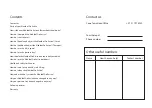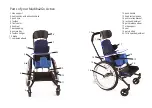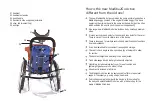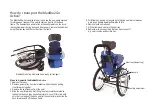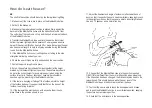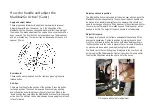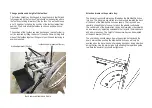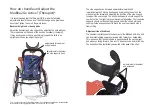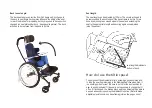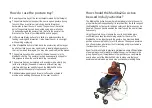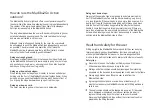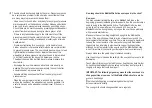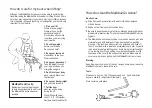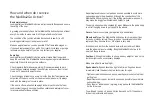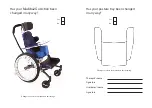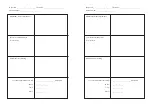
The skin should be checked daily by the carer. Pressure sores can
be a very serious problem for the user who cannot feel but there
are many ways to prevent and manage them:
- Use a mirror to check his/her body daily for any signs of pressure
marks especially on the backbone, shoulder blades and buttocks
area. Look for any pressure marks caused by poor-fitting shoes.
Check there are no marks caused by pressing against wheelchair
parts or from bumps caused during transfers, play or a fall.
- If there is any redness/dark spots, the child must stay off the
pressure area until the skin returns to normal. If there is an open
sore, it will need cleaning, dressing and monitoring by a trained
health worker.
- It is always frustrating for a young user not to be able to use
his/her wheelchair so pressure relief methods are very important
to prevent pressure sores. The user should be shown how to lean
right forwards in the wheelchair or towards the sides of the
wheelchair to relieve pressure. He/she will need to be reminded
to do this often during the day until it becomes a routine.
The wheelchair can also be tilted back to relieve pressure for a
short while.
- Encourage the user’s awareness about skin care as early as
possible. Photos of pressure sores may help the user to better
understand what a pressure sore is.
- Suitable clothing and shoes that fit well can help to prevent
pressure sores.
- When the user gets wet or soiled, wash and dry their skin, as
well as the cushion of the wheelchair, as soon as possible. It is
useful to have an extra wheelchair cushion/cover if the user is
often wet.
How long should the Madiba2Go Active user spend in the chair?
New user:
You may consider limiting the time in the Madiba2Go Active in the
beginning; gradually increasing the time spent in it as the user becomes
used to being in the Madiba2Go Active. The Madiba2Go Active is an
active chair. It is usual after a while to spend 8-10 hours in the
Madiba2Go Active during the day as long as the user has no problems
with pressure marks/sores.
Make sure the user is sitting straight and upright in the Madiba2Go
Active. If the user sits skew, there is a risk of pressure sores and the
development of deformities over time. There are a range of adjustments
to keep the correct posture of the user as he/she grows. Remember
the posture tray is helping to provide extra support during activities
although it may feel easier for the user to push the Madiba2Go Active
when it is removed (check with your therapist when to use/remove it).
Always make sure the pelvic strap is fastened securely.
Use the anti-tips to increase the safety for the user and to prevent a fall
backwards.
Teach other children in contact with the user how they can help him/her
by handling the Madiba2Go Active safely so that they don’t play with it
roughly or in ways that could damage it.
IMPORTANT: The following signs may mean that the user needs to
change position or come out of the Madiba2Go Active for a while:
user’s head hangs
he/she starts fidgeting or complaining about being tired
loses interest in activity
The young child should change position more regularly.


